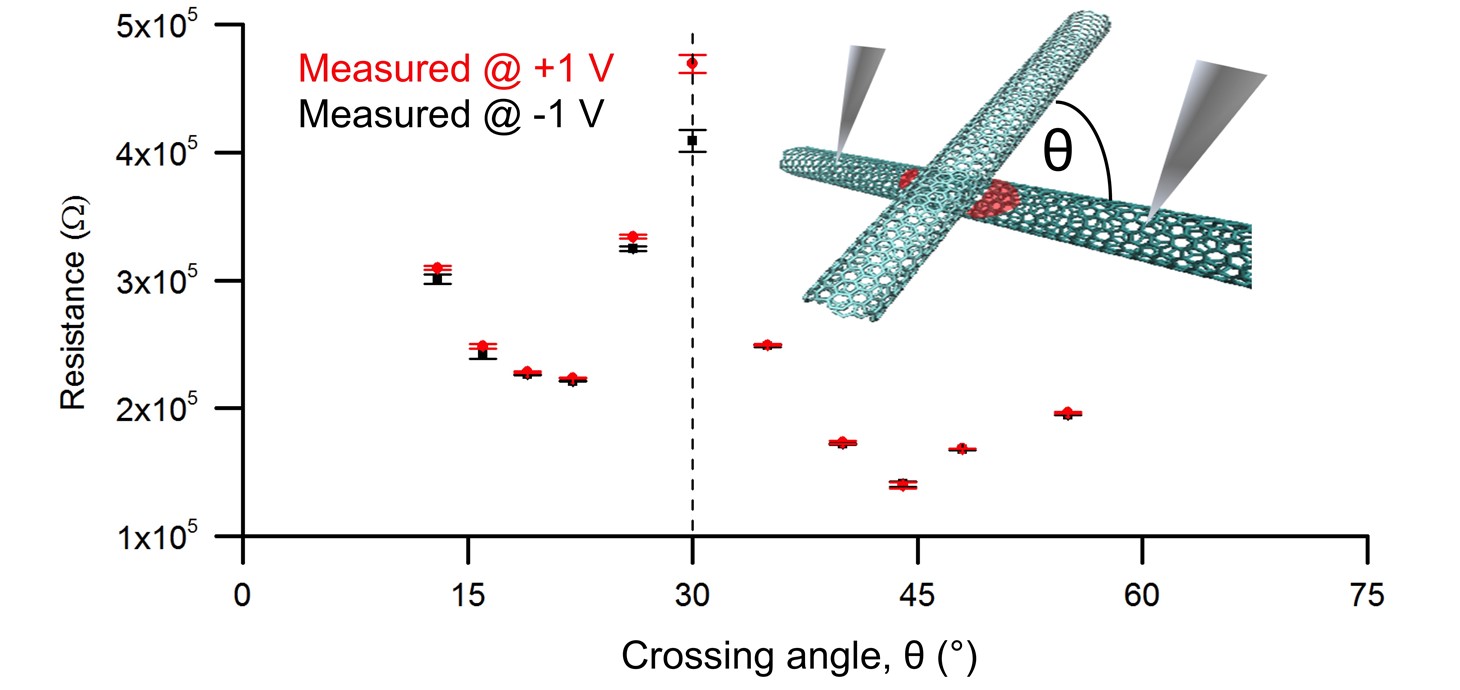These articles are now archived and will no longer be updated.

Swansea University scientists have reported a new approach to measuring the conductivity between identical carbon nanotubes which could be used to help improve the efficiency of electrical power cables in the future.
The new research is published in the American Chemical Society journal Nano Letters. The paper details how the Swansea University research team, based at the Energy Safety Research Institute (ESRI) working with Rice University researchers, made real physical measurements of carbon nanotubes conductivity.
Carbon nanotubes are tiny molecule with incredible physical properties. These cylindrical molecules are filled with hexagonal carbon atoms that look a little like chicken wire wrapped into a graphene tube and are used to produce lightweight wire. These can be made into strong efficient electrical power cable that have the potential to replace existing metal cables, which often overheat and fail – and can lose about 8% of electricity in transmission and distribution globally.
The new study is a significant step forward as previous studies examining conductivity levels could only use theoretical calculations in their measurements. Another limitation was that theoretical studies looked at nanotubes that were similar in diameter - but in reality the diameters of nanotubes vary and it is this variation that makes theoretical models impossible to prove and leads to real practical issues when measuring conductivity in carbon nanotubes.
The experiments
ESRI Director, Professor Andrew Barron, who is also professor at Rice University, and his research team noticed that if two carbon nanotubes of different diameter were laid across each other the resistance at the point of contact was higher than if they were similar in diameter. The team passed a large voltage through one of the crossed carbon nanotubes which broke it and the two halves were welded to the probes.
The two halves of the original carbon nanotube could then be handled in such a way that any measurement guaranteed that the diameter and type were the same - since the two carbon nanotubes were actually from the same carbon nanotube. Once this was discovered, the team set about experimentally reproducing measurements that were previously only theoretical.
The team also found that through their practical experiments they were able to prove some key theories:
- Varying the angle of overlap between the two halves of the original carbon nanotube shows a variation in electrical conductivity.
- Measuring conductivity between two parallel halves of cut carbon nanotube leads to results that are consistent with the theoretical concept of atomic scale registry.
More detail on the experiments can be found in the study abstract.
Professor Barron said; "This is the first time that it has been possible to make experimental measurements to confirm theoretical models. While it is nice to confirm theory with a real experiment, our methodology now opens up a myriad of possibilities for measurements not previously possible. We are looking forward to expanding the basic knowledge of carbon nanotubes that will help us in the production of efficient electrical cabling and a myriad of other technologies in the future.”
